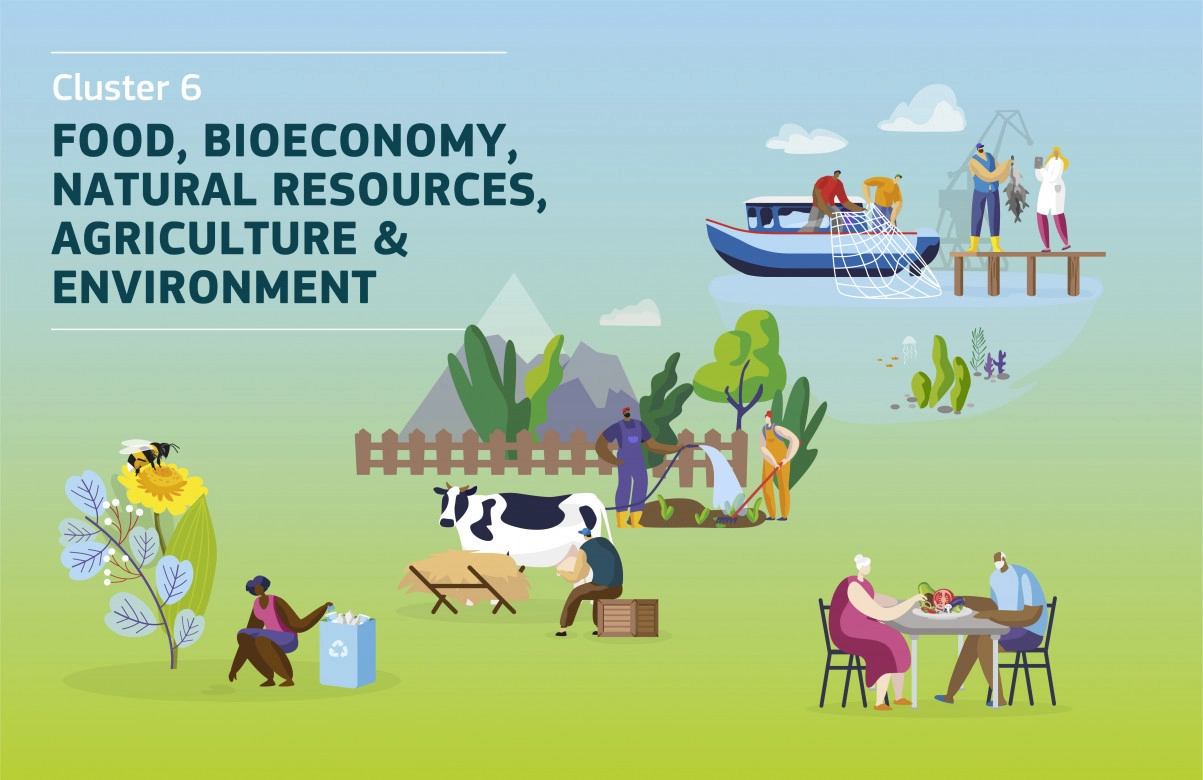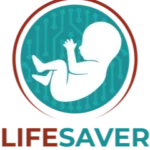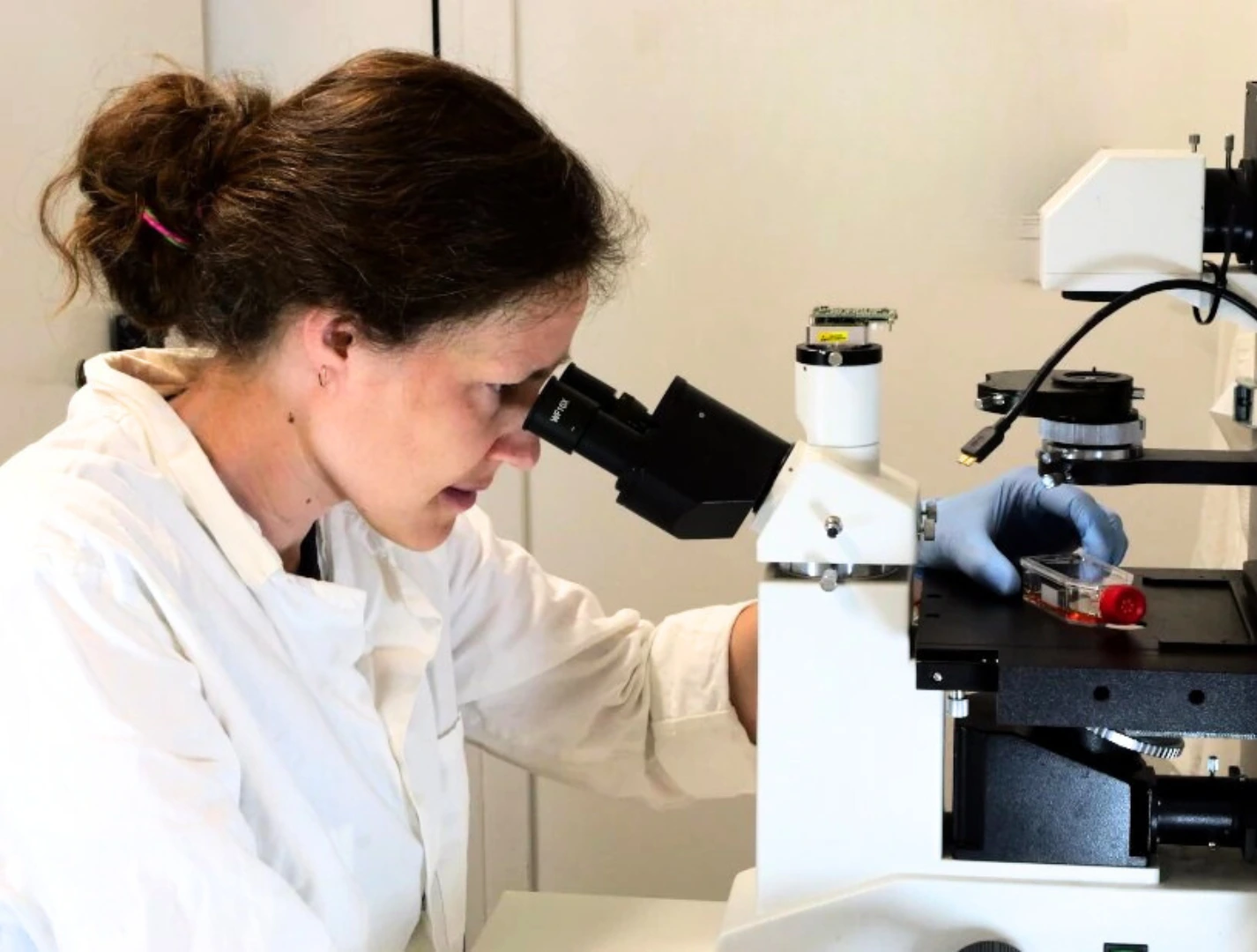Horizon Europe Cluster 6 - Food, Bioeconomy, Natural Resources, Agriculture & Environment
Work Programme 2026-2027
Writer
Celeste Chidiac, PhD
Keywords
Microfluidic Devices, Intelligent Microfluidics, Artificial Intelligence, Machine Learning
Opening
Jan/Feb/Apr/Aug 2026, Feb/Apr 2027
Deadline
Ap/Sep/Nov 2026, Apr/May/Sep 2027
Keywords
Intelligent Microfluidics
Deep Learning
Microfluidic Devices
Artificial Intelligence
Machine Learning
food security and safety
biodiversity conservation
land management practices
bioeconomy
Your microfluidic SME partner for Horizon Europe!
We take care of microfluidic engineering, work on valorization and optimize the proposal with you
Calls ordered by microfluidic relevance
Horizon Europe Cluster 6 2026-2027
We have sorted the calls for projects from Horizon Europe Cluster 6 2026-2027 according to the impact that microfluidics can have on the calls for projects and related topics. We are sharing our analysis in case it can help you with project funding efforts. And, of course, if our expertise can be of use to you, we would be delighted to discuss it further.

How to read the stars in terms of % of microfluidic technologies’ relevance for the call:
By microfluidic relevance, we mean the relevance of using microfluidic technologies for the topic cited. But also, to a lesser extent, what a microfluidic laboratory or SME could contribute to the topic (mainly for calls with low relevance to microfluidic technologies).
Relevance (%) | 90-100 | 80-89 | 70-79 | 60-69 | 50-59 |
Relevance (*) | ***** | **** | *** | ** | * |
More information can be found in the CL6 work programme draft: Cluster 6 – Food, bioeconomy, natural resources, agriculture, and environment
(Details for topics that have more than 50% relevance to microfluidics are provided below, ordered by decreasing microfluidic relevance)
Discover more!
Horizon Europe Cluster 6 2026-2027 Calls ordered by microfluidic relevance
TOPICS WITH Microfluidics RELEVANCE ≥ 50% (sorted by decreasing relevance)
***** HORIZON-CL6-2027-02-FARM2FORK-07 – TOWARDS COMMERCIALIZATION OF FOOD SYSTEMS MICROBIOME SOLUTIONS
- Type of action: IA
- Opening 20 Apr 2027; Deadline 22-23 Sep 2027
- Budget (M€): 17.50; Expected EU contribution/project (M€): 8.75; # projects: 2
- Scientific focus: Push promising microbiome‑based solutions along the last translational mile: pilot manufacturing, validation in operational environments, regulatory and safety dossiers, consumer/market readiness, and integration in food value chains. Prioritizes demonstrators that reduce environmental footprint and improve resilience/health aspects of food systems.
- Why microfluidics matters:
- High‑throughput screening and optimization of microbial consortia in droplet microfluidics to accelerate strain/consortium selection and formulation robustness.
- Miniaturized bioprocess development (parallelized micro‑bioreactors) to de‑risk scale‑up and map design space (pH, oxygen, feed strategies) under industry‑relevant conditions.
- On‑chip analytics (metabolites, viscosity, rheology, live/dead, biofilm propensity) to compress iteration times from weeks to days.
- Regulatory‑aligned QC workflows (sterility, contamination, batch consistency) using lab‑on‑chip methods that can port to GMP environments.
- Encapsulation/micro‑delivery formats (e.g., microgels) to stabilize live microbes or post‑biotics in real matrices.
***** HORIZON-CL6-2026-02-FARM2FORK-11 – INTEGRATING A HOLISTIC PERSPECTIVE IN MICROBIOME RESEARCH FOR RESILIENT, COMPETITIVE AND SUSTAINABLE FOOD SYSTEMS
- Type of action: RIA
- Opening 14 Jan 2026; Deadline 14 April 2026
- Budget (M€): 13.50; Expected/project: 6.00-7.00; # projects: 2
- Scientific focus: Advance integrative microbiome science across the food system (soil-plant-animal-human interfaces), bringing together multi-omics, longitudinal field studies, and system-level modelling to derive actionable interventions for resilience, competitiveness, and sustainability. Emphasis on harmonized methods, data interoperability, and translation across sectors.
- Why microfluidics matters:
- Single‑cell & droplet-based culturomics to access uncultured taxa and quantify interaction networks.
- Lab‑on‑chip perturbation platforms to test diet, stressors, or agrochemical exposures on complex communities.
- Ultra‑low‑volume library prep and on‑chip sample handling reduce bias/costs for metagenomics/metabolomics.
- Standardization: Microfluidics can contribute to interoperable on-chip SOPs and reference materials for cross-study comparability.
**** HORIZON-CL6-2026-01-BIODIV-02- DEVELOPING METHODS TO ASSESS THE PRESENCE, FUNCTIONS, AND SENSITIVITY OF GROUNDWATER ECOSYSTEMS
- Type of action: RIA
- Opening 17 Apr 2026; Deadline 17 Sep 2026
- Budget (M€): 10.00; Expected/project: ~5.00; # projects: 2
- Scientific focus: Develop robust methodologies to detect and characterize groundwater biota and functions, link ecological status to pressures, and build risk indicators and sensitivity thresholds to inform policy. Includes method harmonisation and integration in monitoring frameworks.
- Why microfluidics matters:
- In‑situ and portable chips for eDNA/eRNA capture, pre‑concentration and qPCR/CRISPR‑based detection from low‑biomass samples.
- On‑chip micro‑ecosystem assays to probe functional responses (e.g., redox cycling, nutrient turnover) under controlled gradients mimicking aquifer conditions.
- Droplet & digital assays for sensitive quantification of rare taxa and AMR genes.
**** HORIZON-CL6-2026-01-ZEROPOLLUTION-01-TWO-STAGE – DECONTAMINATE AND BIOREMEDIATE AQUATIC POLLUTION
- Type of action: RIA
- Opening 12 Feb 2026; Deadlines 16 Ap 2026 (Stage 1), 23 Sep 2026 (Stage 2).
- Budget (M€): 23.00; Expected/project: 7.00-8.00; # projects: 3
- Scientific focus: Deliver effective solutions – especially life‑science/biotech‑based – to bioremediate and decontaminate marine, freshwater, and groundwater pollution, focusing on PFAS, antimicrobials, and microplastics; integrate effect‑based and high‑resolution monitoring and demonstrate pollutant pathways to guide management actions.
- Why microfluidics matters:
- High‑throughput screening of strains/enzymes/sorbents against PFAS & CECs in droplet reactors.
- Chip‑integrated effect‑based assays (cell‑on‑chip, organ‑on‑chip) to quantify toxicity reduction.
- Microfluidic fractionation of micro‑/nanoplastics and on‑chip sensors for in‑line monitoring during pilots.
**** HORIZON-CL6-2026-01-CIRCBIO-07 – ADVANCING THE EUROPEAN BIO‑BASED INNOVATION ENABLED BY BIOTECHNOLOGY AND BIOMANUFACTURING CONCEPTS
- Type of action: RIA
- Opening 17 Apr 2026; Deadline 17 Sep 2026
- Budget (M€): 12.00; Expected/project: 4.00; # projects: 3
- Scientific focus: Develop next‑gen biomanufacturing concepts (strain engineering, continuous bioprocesses, modular units), with attention to productivity, robustness, standardization, and sustainability metrics in bio‑based value chains.
- Why microfluidics matters:
- µ‑bioreactor arrays for design‑build‑test‑learn at minimal volumes;
- On‑chip PAT (optical/impedance/chemistry) for real‑time control;
- Scaling laws from chip‑to‑pilot using microfluidics ’s multiphase/segmented‑flow expertise.
**** HORIZON-CL6-2027-02-FARM2FORK-03 – MICROBIOME FOR LIVESTOCK SUSTAINABILITY AND HEALTH WITHIN A ONE HEALTH APPROACH
- Type of action: RIA
- Opening 20 Apr 2027; Deadline 22-23 Sep 2027
- Budget (M€): 13.00; Expected/project (M€): 6.50; # projects: 2
- Scientific focus: Integrate host–microbiome knowledge for livestock health, productivity, and reduced emissions/AMR within a One Health frame; combine longitudinal cohorts, multi‑omics, and intervention studies.
- Why microfluidics matters:
- Gastro‑intestinal organ‑on‑chip to evaluate feed additives/probiotics under realistic shear, pH and mucus conditions.
- Single‑cell analytics to map microbial responders and resistance gene mobility.
- Rapid on‑farm chips for pathogen/AMR surveillance (sample‑to‑answer).
**** HORIZON-CL6-2026-02-FARM2FORK-06 – ADVANCED INNOVATIVE SOLUTIONS FOR IMPROVED COMPETITIVENESS AND SUSTAINABILITY IN CONTROLLED ENVIRONMENT AGRICULTURE (CEA)
- Type of action: IA
- Opening 14 Jan 2026; Deadline 14 April 2026
- Budget (M€): 12.00; Expected/project: 6.00; # projects: 2
- Scientific focus: Demonstrate advanced CEA (greenhouses, vertical farming) integrating sensing, automation, decision support, and circular resource use to raise efficiency and cut inputs/emissions. Emphasizes interoperability and robust business cases.
- Why microfluidics matters:
- Microfluidic nutrient dosing & analysis loops for hydroponics/aeroponics;
- Lab‑on‑chip plant phenotyping (phytohormones, nutrient status, pathogens) for closed‑loop control;
- µ‑reactors for on‑site biostimulant production/conditioning.
*** HORIZON-CL6-2027-01-BIODIV-06 – HEALTH OF ECOSYSTEMS AND WILD SPECIES, PREDICTIONS AND IMPACTS ON HUMAN HEALTH
- Type of action: RIA
- Opening 20 Apr 2027; Deadline 22-23 Sep 2027
- Budget (M€): 14.00; Expected/project: 7.00; # projects: 2
- Scientific focus: Link ecosystem health indicators and stressors to human health via One Health surveillance, modelling and early‑warning, integrating biodiversity, pathogen dynamics and exposure pathways.
- Why microfluidics matters: Fieldable microfluidic assays (eDNA/eRNA, vector/pathogen chips), point‑of‑use toxin/biomarker sensors, and organ‑on‑chip models for cross‑species risk assessment.
*** HORIZON-CL6-2026-02-FARM2FORK-02 – TACKLING PESTICIDE RESISTANCE: EARLY DETECTION, MANAGEMENT STRATEGIES, AND FORESIGHT
- Type of action: RIA
- Opening 14 Jan 2026; Deadline 14 April 2026
- Budget (M€): 12.00; Expected/project: 6.00; # projects: 2
- Scientific focus: Build early‑warning and surveillance for resistance, develop integrated management strategies, modelling, and foresight to prevent resistance spread.
- Why microfluidics matters: On‑chip genotyping of resistance markers, rapid phenotyping of sensitivity in micro‑droplets, and field‑portable sample‑to‑answer for advisory systems.
*** HORIZON-CL6-2026-01-ZEROPOLLUTION-03 – DEVELOPING MANAGED AQUIFER RECHARGE TECHNIQUES (MAR) IN A RURAL CONTEXT
- Type of action: RIA
- Opening 17 Apr 2026; Deadline 17 Sep 2026
- Budget (M€): 12.00; Expected/project: 6.00; # projects: 2
- Scientific focus: Develop and demonstrate MAR solutions tailored to rural settings, aligned with CIS guidance, addressing hydrogeology, water quality, design/operation, monitoring, and governance.
- Why microfluidics matters:
- Porous‑media chips to study clogging, redox fronts, and biofilm dynamics under MAR conditions;
- In‑situ micro‑sensors for nutrients, metals, and microbial indicators;
- On‑chip fate/transport assays for PFAS/CEC attenuation.
*** HORIZON-CL6-2027-01-CIRCBIO-08 – BIOTECHNOLOGY APPLICATION FOR CCU
- Type of action: RIA
- Opening 20 Apr 2027; Deadline 22-23 Sep 2027
- Budget (M€): 12.00; Expected/project: ~6.00; # projects: 2
- Scientific focus: Develop biotechnological CO₂/CO valorization routes (microbial, enzymatic) with improved yields, productivity, and integrability into industrial ecosystems, including sustainability and techno-economic assessments.
- Why microfluidics matters: Gas-liquid microreactors for mass‑transfer-limited CCU, screening of acetogens/methanotrophs in droplets, and on-chip TEA/LCA data streams via PAT.
** HORIZON-CL6-2026-02-FARM2FORK-01 – DEVELOPING INNOVATIVE PHYTOSANITARY TREATMENTS FOR REGULATED PLANT PESTS
- Type of action: IA
- Opening 14 Jan 2026; Deadline 14 April 2026
- Budget (M€): 12.00; Expected/project: 6.00; # projects: 2
- Scientific focus: Pilot novel phytosanitary treatments (efficacy, residue, safety), develop standardized protocols and demonstration in real supply chains, including regulatory interfaces.
- Why microfluidics matters: On‑chip exposure chambers for pest/pathogen life‑stages, dose-response mapping at scale, and micro‑encapsulation strategies for targeted delivery/reduced residues.
** HORIZON-CL6-2027-02-FARM2FORK-08 – AI‑POWERED FOODOME CHARACTERIZATION
- Type of action: IA
- Opening 20 Apr 2027; Deadline 22-23 Sep 2027
- Budget (M€): 8.00; # projects: 1
- Scientific focus: Build AI‑ready pipelines for foodome (chemical/nutritional/hazard profiles) across real matrices; integrate high‑throughput measurement, data fusion, and validation in industry settings.
- Why microfluidics matters: Front-end sample prep on chip (cleanup, extraction, derivatization), µ-scale separations feeding MS/NMR, and inline quality sensors for factory deployment.
** HORIZON-CL6-2026-02-FARM2FORK-04 – ACCELERATING THE DEVELOPMENT OF BREEDING TOOLS FOR PERENNIAL CROPS, SPECIFICALLY FRUIT AND NUT TREES
- Type of action: RIA
- Opening 14 Jan 2026; Deadline 14 April 2026
- Budget (M€): 12.00; Expected/project: 6.00; # projects: 2
- Scientific focus: Develop and integrate breeding tools (genotyping, phenotyping, speed breeding) for perennials; address climate resilience, pests, and quality traits with interoperable data and field validation.
- Why microfluidics matters: Single‑pollen/seed assays on chip, µ‑fluidic phenotyping (hormone/volatile flux), and ultra-low input genomics to accelerate selection cycles.
** HORIZON-CL6-2026-02-FARM2FORK-13 – BOOSTING PLANT HEALTH AND REDUCING LOSSES ON FARM AND DURING STORAGE FOR SUSTAINABLE GROWTH IN AFRICA (FNSSA)
- Type of action: IA
- Opening 14 Jan 2026; Deadline 14 April 2026
- Budget (M€): 12.00; Expected/project: 6.00; # projects: 2
- Scientific focus: Demonstrate practical interventions that reduce field and storage losses in African contexts (plant health, diagnostics, storage tech, IPM), with capacity‑building and local value‑chain integration.
- Why microfluidics matters: Portable microfluidic diagnostics for pests/pathogens/mycotoxins, low‑cost on‑chip sensors for storage conditions (humidity, volatiles), and micro‑encapsulated treatments.
** HORIZON-CL6-2027-01-ZEROPOLLUTION-03 – IMPROVE THE CAPACITY TO MONITOR AND REDUCE AIR POLLUTION FROM AGRICULTURE
- Type of action: RIA
- Opening 20 Apr 2027; Deadline 22-23 Sep 2027
- Budget (M€): 12.00; Expected/project: 6.00; # projects: 2
- Scientific focus: Develop and validate monitoring/mitigation strategies for agri‑air pollution (e.g., NH₃, PM, VOCs), linking measurement, modelling, and interventions.
- Why microfluidics matters: µ‑gas sensors & micro‑preconcentrators for NH₃/VOCs, aerosol‑on‑chip characterization, and sensor fusion with data models.
** HORIZON-CL6-2027-02-FARM2FORK-01 – INCREASING THE RESILIENCE OF AGRICULTURE IN WATER‑ AND NUTRIENT‑SCARCE ENVIRONMENTS THROUGH DIGITAL INNOVATIONS
- Type of action: RIA
- Opening 20 Apr 2027; Deadline 22-23 Sep 2027
- Budget (M€): 12.00; Expected/project: 6.00; # projects: 2
- Scientific focus: Deploy digital sensing/decision tools to manage scarce water/nutrients; integrate agronomy, remote sensing, and farm‑level automation.
- Why microfluidics matters: Soil‑pore‑scale chips to study nutrient transport, sap‑flow micro‑sensors, and on-chip nutrient monitoring for precision fertigation.
** HORIZON-CL6-2026-03-GOVERNANCE-04 – SUPPORTING ALL-ATLANTIC OCEAN RESEARCH AND INNOVATION ALLIANCE
- Type of action: RIA
- Opening 04 Feb 2027; Deadline 11 May 2027
- Budget (M€): 15.00; Expected/project: 5.00; # projects: 3
- Scientific focus: Co‑design and validate new ocean observing technologies and system architectures, improving coverage, interoperability, and sustainability of observing networks.
- Why microfluidics matters: Lab‑on‑chip nutrient & pH sensors for autonomous platforms, biofouling‑resistant micro‑analysers, and compact micro‑samplers.
** HORIZON-CL6-2027-01-BIODIV-01 – INTEGRATING REMOTE SENSING AND IN‑SITU OBSERVATIONS OF BIODIVERSITY, TOWARDS A FULLY INTEROPERABLE OBSERVATION AND DATA FRAMEWORK
- Type of action: RIA
- Opening 20 Apr 2027; Deadline 22-23 Sep 2027
- Budget (M€): 10.00; Expected/project: 5.00; # projects: 2
- Scientific focus: Build interoperable frameworks that connect in‑situ biodiversity observations with RS products, enabling indicators and policy‑relevant monitoring.
- Why microfluidics matters: microfluidics can supply standardized on‑site sampling cartridges (eDNA/eRNA/chemistry) that dovetail with RS products and data pipelines.
** HORIZON-CL6-2027-01-BIODIV-03 – TECHNICAL INNOVATION TO PROTECT ECOSYSTEMS AND TO SCALE UP THEIR RESTORATION
- Type of action: IA
- Opening 20 Apr 2027; Deadline 22-23 Sep 2027
- Budget (M€): 14.00; Expected/project: 7.00; # projects: 2
- Scientific focus: Demonstrate restoration technologies at scale (monitoring, adaptive management, supply‑chain tools), with robust ecological and socio‑economic KPIs.
- Why microfluidics matters: In‑field micro‑assays for soil/water health and portable biosensors to steer restoration actions in near‑real time.
** HORIZON-CL6-2026-02-CLIMATE-02 – TOWARDS THE WATER INFRASTRUCTURES OF THE FUTURE
- Type of action: RIA
- Opening 14 Jan 2026; Deadline 14 April 2026
- Budget (M€): 10.00; Expected/project: 5.00; # projects: 2
- Scientific focus: Design and validate resilient water infrastructures, integrating sensor networks, digital twins, and nature‑based options for droughts/floods/quality.
- Why microfluidics matters: Networkable micro‑analysers for contaminants/nutrients, and lab-on-chip early‑warning modules for plant operators.
** HORIZON-CL6-2027-02-CLIMATE-03 – CARBON FARMING INNOVATION AND SCALE‑UP
- Type of action: IA
- Opening 20 Apr 2027; Deadline 22-23 Sep 2027
- Budget (M€): 12.00; Expected/project: 6.00; # projects: 2
- Scientific focus: Pilot and scale carbon‑farming practices with robust MRV, permanence, and economics.
- Why microfluidics matters: Soil‑on‑chip microcosms to quantify carbon stabilization processes and in‑situ microsensors for soil gases and dissolved organics.
** HORIZON-CL6-2027-02-CLIMATE-01-TWO-STAGE – OPEN TOPIC: INNOVATIVE SOLUTION FOR THE WATER RESILIENCE STRATEGY
- Type of action: IA
- Opening 20 Apr 2027; Deadline 22-23 Sep 2027
- Budget (M€): 10.00; Expected/project: 5.00; # projects: 2
- Scientific focus: Open innovation for EU Water Resilience Strategy-deployable tech with measurable resilience gains.
- Why microfluidics matters: Compact treatment/monitoring modules (e.g., PFAS pre‑concentration + sensor), micro‑scale process intensification for distributed water systems.
** HORIZON-CL6-2027-01-ZEROPOLLUTION-01 – REPLACING HAZARDOUS SUBSTANCES IN BIOCIDAL PRODUCTS
- Type of action: RIA
- Opening 20 Apr 2027; Deadline 22-23 Sep 2027
- Budget (M€): 12.00; Expected/project: 4.00; # projects: 3
- Scientific focus: Develop safer, effective alternatives to hazardous actives in biocides; include mode‑of‑action evidence and risk/benefit assessments.
- Why microfluidics matters: High‑content micro‑bioassays for efficacy/cytotoxicity, time‑resolved on‑chip kinetics, and micro‑encapsulation to tune delivery while reducing exposure.
The MIC already brings its expertise in microfluidics to Horizon Europe:
H2020-NMBP-TR-IND-2020

Microfluidic platform to study the interaction of cancer cells with lymphatic tissue
H2020-LC-GD-2020-3

Toxicology assessment of pharmaceutical products on a placenta-on-chip model
FAQ - Horizon Europe Cluster 6 2026-2027 ordered by microfluidic relevance
What’s the topic here?
A close look at Cluster 6’s plan (Food, Bioeconomy, Natural Resources, Agriculture & Environment), but only through one angle – where microfluidics shifts results. I rated each topic by how much it fits with microfluidic use, then jotted brief thoughts on how chips, droplet setups, organ-on-chip models, real-time micro-analysis, or tiny bioreactors become realistic, solid projects. Goal’s basic. Lean toward stuff you can actually make.
Which Cluster 6 themes are a good fit for microfluidics in 2026-2027?
Three families show up repeatedly:
- Microbiomes across food systems (discovery → commercial use)
- Zero-pollution & water (PFAS/CECs, aquifers, monitoring)
- Bio-based manufacturing & CCU (screening, PAT, continuous µ-reactors)
Spinning around these: CEA with vertical farming setups, how diverse life ties into better health, bugs fighting off pesticides, along with how farming messes with air quality. Running tiny live tests right there, tweaking things quick – that’s key here. Maybe they shift pace more than just slashing expenses.
Examples of topics that really matter
- Commercialization of food systems microbiome solutions (IA): droplet screening at scale, ready-to-go quality checks on a chip, encapsulation for delivery
- Holistic microbiome research (RIA): single-cell or droplet culturomics, lab-on-a-chip manipulation, omics from tiny samples
- Decontaminate/bioremediate aquatic pollution (RIA): lab-on-a-chip tests that react to toxins, fast ways to test cleanup materials or microbes, sorting out small plastic bits from liquid
- Biotech & biomanufacturing concepts (RIA): µ-bioreactors running side by side, built-in sensors tracking progress live, split-stream mini systems mimicking big setups
What action types and TRLs should I expect?
- RIA: finding ways to test ideas → usually TRL 3-5, backed by real checks
- IA: test runs, checking in real-world settings, meeting rules early, ready for market → TRL 6-7
- Some topics with two steps in clean-water systems. Microfluidics works for either side. Still, RIA are more about testing and setting norms. On the flip side, IA focuses on durability, real-time checks, quality control, and integration with trial production lines. From what I’ve watched, this divide actually runs smoothly.
What's the real deal with why microfluidics counts?
Not about chips being neat – it’s the main route. Use droplet HT screening to test strains or enzymes. Cartridges you can take into the field check for eDNA, eRNA, or poisons. Organs-on-a-chip show how things react when exposed. Link up tiny analyzers to monitor air or water. Handle samples right on the chip for omics or keep factory output in check. These steps cut down cycles, boost numbers, yet let teams decide right there.
What’s an example of a strong consortium working together?
Four pieces help:
- A microfluidic partner that designs, fabricates, and validates (not just “provides a chip”)
- The main area – farming, food, water, life, and bio-production – with actual test cases, trial pathways, and a clear understanding of rules.
- A data backbone – works with interoperability, follows FAIR rules, uses modeling or AI only when it helps.
- Exploitation owners, like manufacturers or system managers – are set to start using the technology.
Get a solid microfluidics expert on board right away – chances of success go up. Deadlines get easier to handle, thanks to their input. Moving into trial runs becomes way more stable, mostly because things are better planned. Our team says picking the right person here wipes out about 50% of future headaches.
Where does the Microfluidics Innovation Center (MIC) fit?
We typically start with:
- Testing setups – like droplet or digital ones, also continuous systems – speed up design-build-test loops by shrinking cycle times through tighter workflows.
- Organ-on-a-chip setups that use cell reactions to test for no contamination.
- Portable test kits with tiny sensors – handle sample prep or boost detection speed, use CRISPR or qPCR methods, and also track gas levels on-site.
- Pilot-ready QA/QC workflows and PAT integration.
We also co-author the work plan (milestones, KPIs, risks) in a way that evaluators trust. From past Horizon work, having MIC in the consortium has roughly doubled success rates compared to baseline stats for calls where microfluidics is pivotal.
How to pitch ideas on these subjects?
Tie every microfluid job to a measurable KPI – like time-to-decision, price per test, or consistency.
- With IA, lay out how it moves into action – think GxP, measurement tools, durability needs, upkeep, logistics flow, plus what each unit costs.
- When dealing with the microbiome, set up common methods right away – make sample handling, data labels, and control substances work together from the start.
- With water pollution, link sensor data to how things are handled.
Keep info FAIR plus grounded; working together matters more than a messy storage trap.



